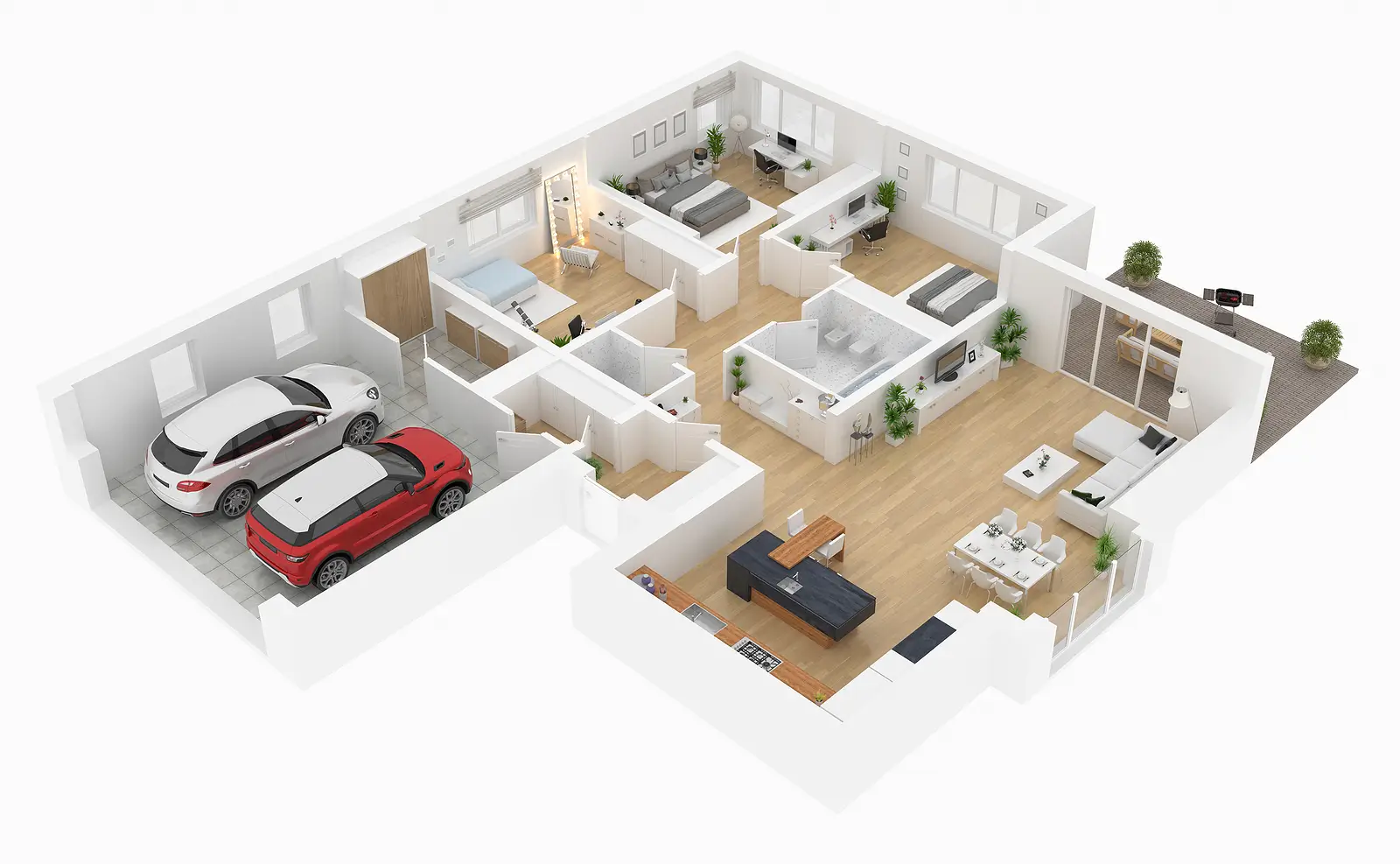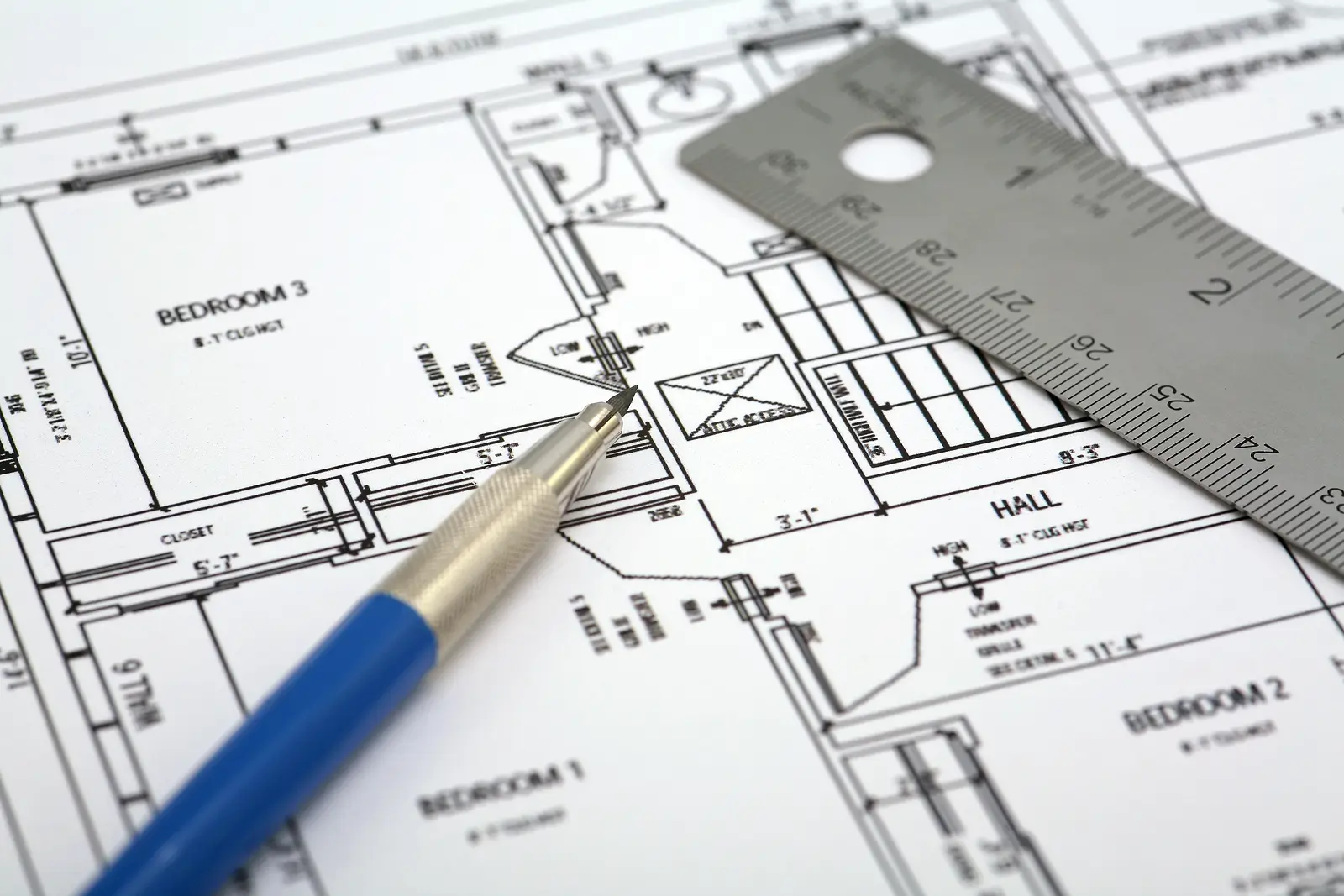It's important to know the specific size of the livable space in a home, especially if you intend to bring your own belongings and furnishings. On a smaller scale, it might be easy to visualize what a square foot looks like, but in terms of floor space, it's much harder to comprehend. Read ahead and learn how to measure square footage by using tools and estimation.
Key Highlights:
- Visualizing square footage starts with understanding measurements. One square foot is a 12-inch by 12-inch square, and larger spaces can be estimated using familiar comparisons like garages or bedrooms.
- Calculating square footage is straightforward for simple shapes. Multiply the length by the width for rectangular areas, or break complex floor plans into smaller rectangles and add them up.
- Not all spaces are included in the total square footage. Only finished, livable areas such as bedrooms, bathrooms, and hallways are counted; unfinished basements are typically excluded.
- Tools like tape measures and laser distance meters help with accuracy. For precise measurements or real estate purposes, consider hiring a professional appraiser.
- Price per square foot helps assess market value. Divide a property’s price by its square footage and compare similar listings to set a competitive and realistic price.
Comprehending Measurements
Before you can visualize how much space a specific square footage is, you need to associate it with other measurements. In one square foot, the length and width are 929.03 cm x 929.03 cm. For an easier comparison, all sides are the same length as a 12-inch ruler.
On a larger scale, you can base your estimations on spaces you're already familiar with. A 400 square foot space is approximately the size of a small garage that can fit two average-sized vehicles, with just a bit of room to exit the car. Keep in mind that this is just an approximate square footage, and the best way to measure square footage is always through tools like tape measures.

How to Calculate a Home's Square Footage
If the property's floor plan is a rectangle, determining the total square footage is relatively easy. Measure the length and width of the building and multiply those two numbers together to get the home's total square footage. For example:
35 ft² x 45 ft² = 1,575 ft²
It's a little more complicated when the floor plan is not a simple rectangle, and that is often the case. The easy way to calculate square footage for a complex floor plan is to divide it into smaller rectangles for each room. Hallways, vestibules, and enclosed porches are typically included in these calculations.
You calculate square footage as indicated before, and simply add those numbers to determine the overall square footage of the entire house. To avoid miscalculations, you can look at the floor plan on paper and write the dimensions down as you measure them. You can also use a square footage calculator to take potential human error out of the equation.
What To Include When You Calculate Square Footage
You usually include all spaces that can be occupied when you calculate square footage, such as living rooms, dining rooms, bedrooms, bathrooms, garages, hallways, vestibules, and the like. These are all part of the Gross Living Area.
What you leave out are spaces you can walk or live in, even basements. Yes, you can technically occupy the room, but they are usually excluded due to being below ground level. As a rule of thumb, only include finished spaces. Do your research to learn whether your state allows you to include basements, and what is required for the room to be qualified.
Tools and Professional Help for Measuring Square Footage
DIY square footage calculation for the sake of knowing and planning is okay, especially if you only intend to measure the space for furniture. You can use a tape measure or a laser distance measurer. It's easy enough to calculate square footage if you have a calculator on your phone.
However, if you intend to sell your home, it's best to hire a professional appraiser. Accuracy is crucial in a home appraisal since it will help buyers evaluate a home's value based on price per square foot. A professional will have the necessary tools to calculate the square footage of a home to the inch.
How To Determine Price Per Square Foot?
There are plenty of factors that go into finding the market value for a home based on square footage. There's the age, condition, proximity to amenities, property features, market conditions, and more. Knowing your prop
It would help if you look at rental listings of properties of a similar size to your house. Check the home's square footage and use it to divide by the property's listing price. The formula for calculating square footage is simply:
Real Estate Listing Price / House's Square Footage = Price per Square Foot
Once you determine that, you can set a competitive price, whether for selling or renting. Keep in mind that this is crucial if you want your property to sell quicker, but it's also important to consider whether your real estate has more to offer or not.
In the rental market, potential tenants will not just consider how big the house is, but also how many rooms it has. They will also consider the location and the amenities it comes with, all of which are important information to include in a rental listing apart from square footage.
Square Footage Calculation FAQs
How to calculate the square footage of a home that's not a perfect triangle?
- Break the space into smaller, regular shapes, calculate the square footage of each, and add them together. To avoid errors, use a square footage calculator.
What tools can I use to calculate square footage?
- You can use a tape measure if the property is relatively small. However, a laser distance measurer might be more useful when you're measuring longer distances.
How accurate do my measurements need to be?
- For most uses, measurements with an accuracy of within 1 inch are fine. For construction or remodeling, use a laser measuring tool or consult a professional.
Are outdoor spaces like patios or decks included?
- Usually not included in the total livable square footage, but can be listed separately as "additional space." Check local building codes, as they can influence what you can count as livable space.
Looking for a Home or Renting Out One? We Got You Either Way
Income Property Advisors can offer assistance for property owners who want to turn a property into a rental business. We can do more than calculate your property's square footage to determine the right rent price through rental analysis.
Looking to rent? Our website can provide you with a variety of rental listings that will suit your needs. You can tell us your preferences, and we will be as helpful as we can. You can filter out listings by rent cost, number of beds and baths, cities, zip codes, and pet policies.
No time to lose! Contact us today, and we can get your needs sorted out.



